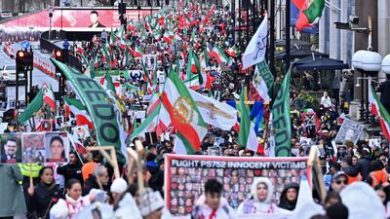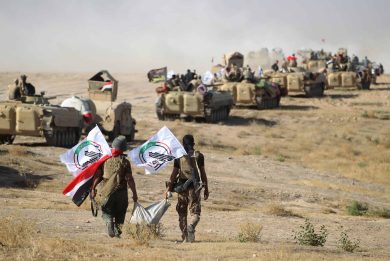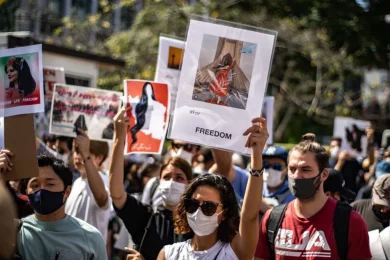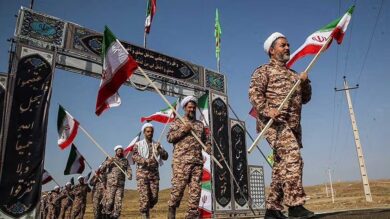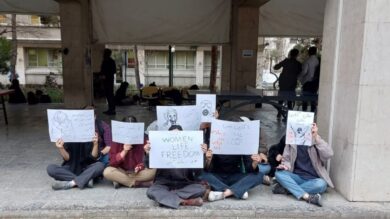The Islamic Revolutionary Guard Corps (IRGC) has developed a sophisticated and far-reaching strategy for controlling Iran’s digital space. Through surveillance, censorship, cyberattacks, and internet shutdowns, the IRGC restricts freedom of expression and targets dissidents, journalists, and activists. This report investigates the tools, tactics, and impacts of the IRGC’s digital repression and highlights the urgent need for global action and digital solidarity.
1. Introduction
In an age where the internet is a primary tool for information, communication, and mobilization, authoritarian regimes have turned to digital control as a means of oppression. In Iran, the IRGC plays a central role in policing cyberspace, deploying a mix of military-grade surveillance, cyberwarfare, and censorship infrastructure to silence dissent.
2. Structure of Digital Control in Iran
A. The IRGC’s Cyber Units
• The IRGC operates specialized cyber divisions, such as the Cyber Defense Command and Unit 840, responsible for internal monitoring and external attacks.
• These units are responsible for:
• Tracking online activity of activists.
• Conducting phishing attacks on dissidents.
• Disrupting opposition websites and foreign news platforms.
B. Partnership with State Institutions
• Works closely with the Ministry of Intelligence, FATA (cyber police), and judiciary to target individuals and remove content.
• State-run ISPs assist in data collection, website blocking, and traffic throttling during unrest.
3. Tools and Tactics of Repression
A. Censorship and Content Filtering
• Over half a million websites are blocked, including news outlets, human rights organizations, and social media platforms.
• Popular platforms like Twitter, Facebook, Telegram, and YouTube are banned.
• Advanced Deep Packet Inspection (DPI) technologies are used to detect and block encrypted traffic.
B. Internet Shutdowns and Throttling
• During protests, the IRGC orders complete internet blackouts to cut off external communication and coordination.
• Example: Nationwide shutdown during November 2019 protests.
• Speed is often deliberately throttled to discourage digital activism and livestreaming.
C. Surveillance and Tracking
• Use of spyware, malware, and fake apps to monitor activists.
• Mobile phone data is harvested through state-affiliated platforms.
• Online forums and encrypted apps like Signal and WhatsApp are infiltrated.
D. Online Harassment and Intimidation
• IRGC cyber units engage in coordinated harassment campaigns:
• Doxing (publishing private info).
• Threats via anonymous accounts.
• Intimidation of families inside Iran.
4. Targeting Women and Minorities Online
• Women activists face gendered disinformation, threats of sexual violence, and deepfake attacks.
• Ethnic and religious minorities, including Kurds, Baloch, and Baháʼís, are disproportionately surveilled and censored.
• Campaigns like #MyStealthyFreedom are aggressively monitored and targeted.
5. Propaganda and Disinformation
A. Fake News Networks
• The IRGC runs a network of pro-regime news pages and social media bots to spread propaganda and drown out real stories.
• False narratives are pushed during protests to blame “foreign enemies” and delegitimize movements.
B. Online Infiltration of Opposition
• Fake accounts pose as activists to disrupt organization and gather intel.
• Controlled Telegram channels and WhatsApp groups used to confuse protesters.
6. The Impact on Civil Society
• Digital repression has led to:
• Self-censorship among journalists and users.
• Exile or arrest of prominent digital activists.
• Crippling of NGOs, human rights groups, and independent media in cyberspace.
• Iranian youth, the country’s most connected generation, face increasing digital isolation from the global internet.
7. Resistance and Workarounds
A. Use of VPNs and Proxy Tools
• Millions of Iranians use VPNs, Tor, and other tools to bypass censorship—despite government bans.
B. Exiled Activism and Diaspora Support
• Iranian activists abroad play a vital role in:
• Exposing digital repression.
• Supporting secure communication tools.
• Amplifying silenced voices.
C. Global Tech and Civil Society Collaboration
• NGOs like Access Now, ARTICLE 19, and NetBlocks track shutdowns and provide tools.
• Tech companies must step up efforts to protect Iranian users.
8. Global Response and Accountability
• The IRGC has been sanctioned by the U.S. and some allies for cyber operations and human rights abuses.
• International bodies must:
• Pressure platforms to protect dissidents.
• Provide digital infrastructure during blackouts (e.g., satellite internet).
• Hold the IRGC accountable at the international level for violating digital rights.
Conclusion
Iran’s digital space is a battleground between a regime desperate to maintain control and a population, especially its youth and women, striving for freedom. The IRGC’s systematic suppression of online freedom is a violation of human rights and a direct assault on civil liberties.
But repression breeds resistance.
Iranian digital activists continue to innovate, organize, and rise—even behind firewalls. Their courage deserves global recognition and support.
Join Our Newsletter!
Stay informed with the latest updates, news, and ways to take action in the fight for justice and global security. Sign up now to get updates delivered straight to your inbox!

